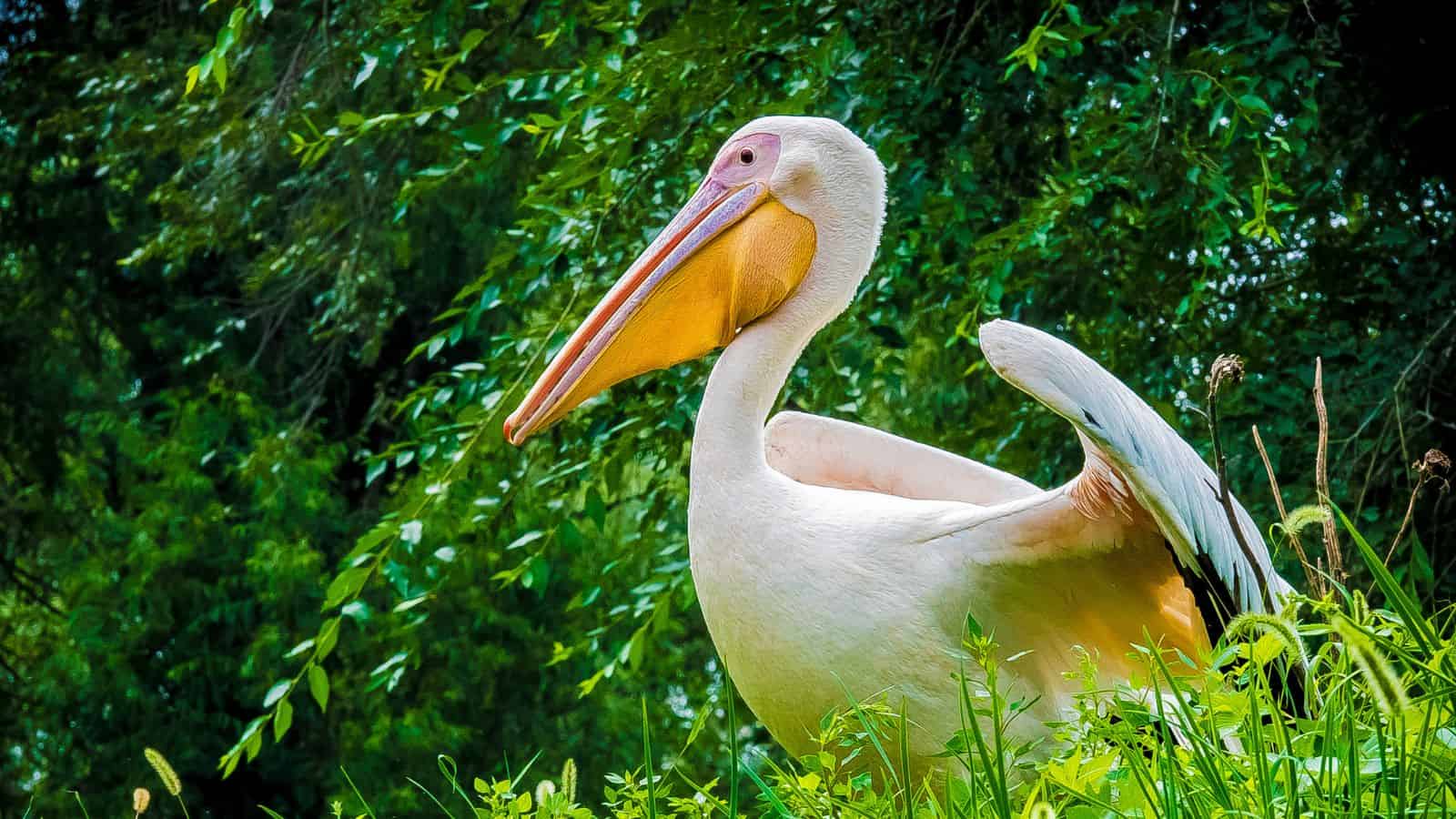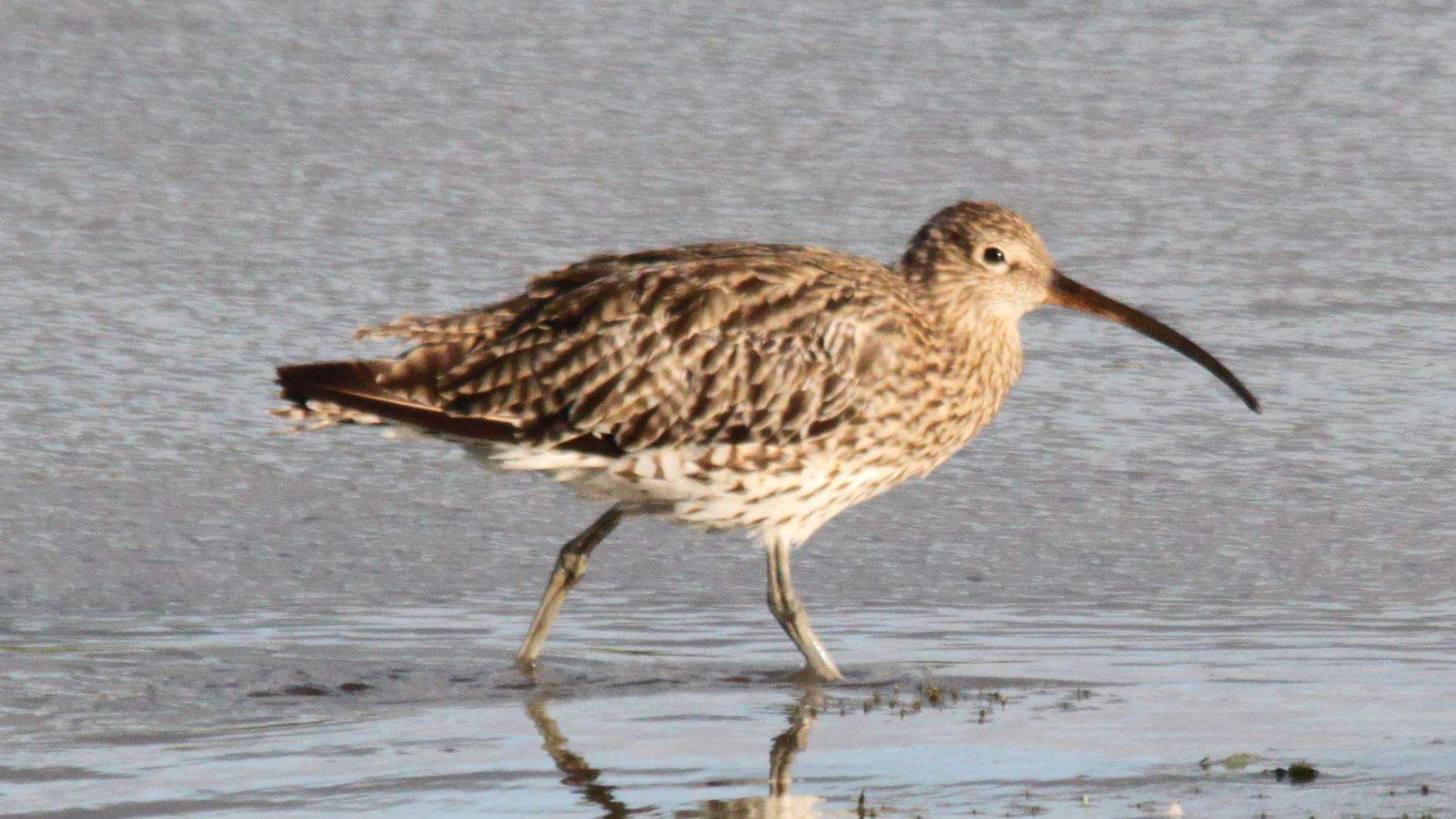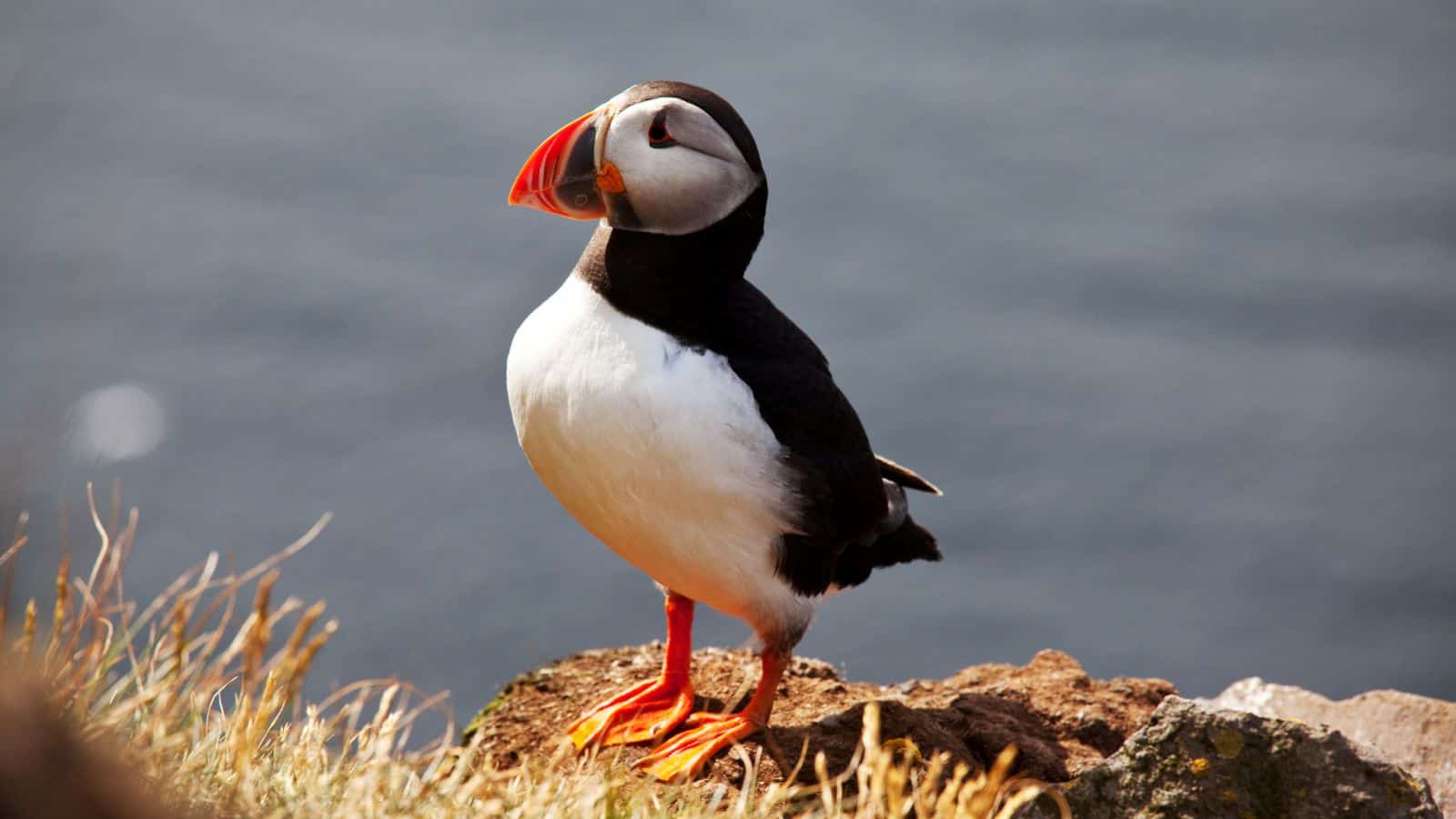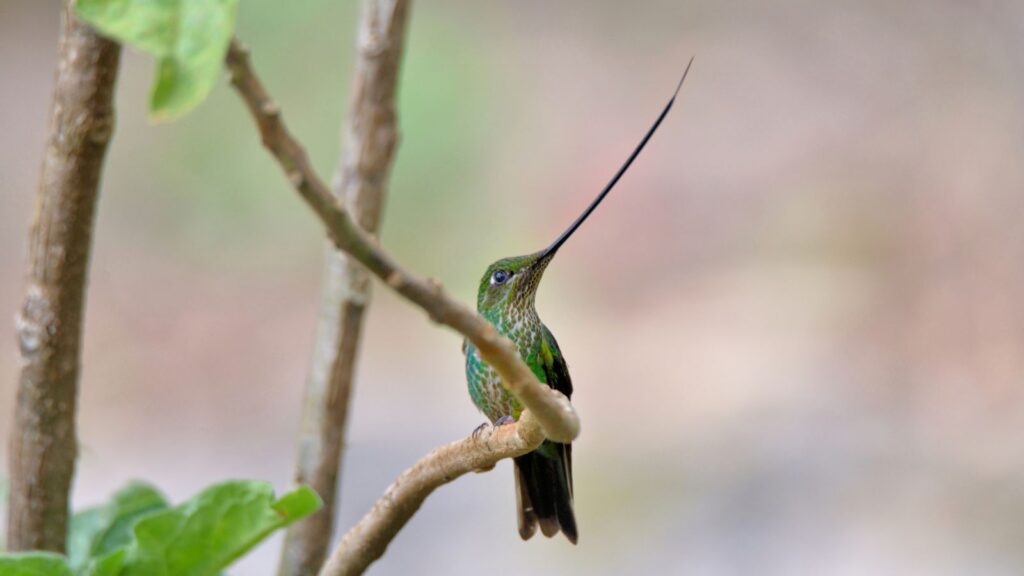The greatest tool possessed by most birds is its bill (or beak). It can be used for accessing and eating food, building nests, preening feathers, and more.
Some of the most interesting bills – take the red crossbill, for example – aren’t very large, but the world of birds also has a few species with notably long, wide, or bulky bills.
Let’s take a look.
Pelicans

Pelicans are some of the most familiar big-billed birds out there, with eight different species across the globe that use their deep bills to scoop up fish.
The large pouch-shaped bill inspired the limerick from Dixon Lanier Merritt, which changes in form a bit depending on who is repeating it:
“A wonderful bird is the pelican, his beak can hold more than his belly can. He can hold in his beak enough food for a week, but I’ll be damned if I know how the hellican.”
What’s more, according to the U.S. Fish and Wildlife Service, Merritt was right: the brown pelican’s bill can hold up to three times that of its stomach.
The brown pelican, found up and down the Atlantic and Pacific coasts of North America and northern South America, and the Caribbean, is one of two pelican species native to North America, with the other being the American white pelican.
The other pelican species include the Australian white pelican, Peruvian pelican, great white pelican, pink-backed pelican, Dalmatian pelican, and spot-billed pelican.
Toucans

There are five toucan genera in the family Ramphastidae, which includes toucanets and aracaris.
The Ramphastos genus contains eight toucan species, of which the most recognizable is probably the toco toucan, the largest toucan species.
They grow to about 25 inches long, of which 7.5 inches consists of a large bill, though the bill takes up a very small proportion of the bird’s weight, despite its large size.
All eight of the toucan species live amongst the trees in Central America and South America.
Shoebill

A bird of growing fame in the social media era, shoebills are African wading birds with otherworldly bills.
Adding to the interest surrounding their bills, they can use them to create a unique clattering noise, though they’re mostly silent birds that are known to stand silent and motionless for long periods while waiting for prey.
Sometimes referred to as a shoebill stork, this bird is considered vulnerable, with an estimated population of between 3,300 and 5,300, according to BirdLife International. Among the threats to this iconic species are droughts due to climate change, which reduce their wetland habitats, hunting, and the illegal wild bird trade.
Hornbills

It’s impossible to choose just one hornbill species for inclusion on this list, with over a dozen genera and many unique species. Some of the most popular and well-known belong to the Buceros genus, including the rhinoceros hornbill and great hornbill, as well as Rhinoplax vigil, the helmeted hornbill.
The helmeted hornbill occupies its own genus. There’s really no other bird like it.
Atop its large yellow-orange bill is an ivory casque that accounts for about 11 percent of this gorgeous bird’s weight, according to the BBC. That casque, used for jousting with other hornbills, is partly the reason the species finds itself critically endangered in its most recent Red List assessment from BirdLife International.
Their casques are very valuable to poachers. Habitat loss in the species’ range in countries like Myanmar, Thailand, and Malaysia is also a threat.
These are common threats for other hornbills like the great hornbill and rhinoceros hornbill, both considered vulnerable in their most recent Red List assessments.
Curlews

The long-billed curlew, as its name implies, has a bill that’s longer than it is “big.” This North American species is closely related to other curlews like the far eastern curlew, a resident of Asia.
The long-billed curlew is North America’s largest shorebird (via the National Audubon Society), though it spends its breeding season inland among the grasslands of southwestern Canada and the western United States.
During its winters on the shores, it uses its long bill to dig into the ground for crabs and other morsels.
Despite a negative population trend due to some decreases in breeding grassland habitat, the long-billed curlew is not currently considered threatened or endangered.
Other curlews aren’t in such a good position, such as the far eastern curlew, which is endangered and decreasing in number quickly.
Sword-Billed Hummingbird

“Big” is subjective, but in terms of the sword-billed hummingbird, big is proportionate.
A resident of western South America, this is one of the largest species of hummingbird, coming in at about 21 centimeters long, with half of that length being its thin bill, according to Britannica.
This bill, the longest in the avian world proportionate to body length, allows the sword-billed hummingbird to reach deep into long flowers and avoid competition with other hummingbird species. But it isn’t too useful for preening, as shown in this clip from BBC Earth’s “Planet Earth II:”
Spoonbills

The Americas’ only resident spoonbill is the roseate spoonbill, which lives year-round in the Gulf Coast states, though most of its range is in South America and the Caribbean.
Sometimes spoonbills can find themselves in weird locations. For example, northeastern Wisconsin recorded a sighting of one in late July 2023, and one turned up in Minnesota back in 2018.
Spoonbills swing their long bills through shallow water to feed on small fish or invertebrates.
There are six species of spoonbills in the genus Platalea including the roseate spoonbill: The Eurasian spoonbill, the black-faced spoonbill (native to Asia), the African spoonbill, the royal spoonbill (Australia and New Zealand), and yellow-billed spoonbill (Australia).
Skimmers

Skimmers have bills that just don’t quite look right, with a top that’s noticeably shorter than the bottom half.
Most of the black skimmer’s range is in South America, though they can be seen along the coasts of the United States, where they eat by skimming the top of the water for fish, hence their name.
There are three skimmer species in the genus Rynchops: the black skimmer, the African skimmer, and the Indian skimmer.
The black and African skimmers are classified as of “least concern” in their most recent IUCN Red List assessments, but the Indian skimmer is listed as endangered.
Flamingos

Extremely well-known birds for their pink color, American flamingos also have very neat bills.
Their oblong bills aim downward, and they are instrumental in the bird’s feeding habits.
According to Smithsonian’s National Zoo & Conservation Biology Institute, flamingos stir up food using their feet, then tip their heads upside down, sweeping their partially open bill through the water.
Rapid movement of the tongue draws water in and out to the bill, which contains comb-like edges to filter food from the water.
In addition to the American flamingo, there are five other flamingo species in the Phoenicopteridae family.
Three – the Andean flamingo, James’s flamingo, and Chilean flamingo – are native to South America. The lesser flamingo is native to Africa and parts of India and the greater flamingo is native to parts of Africa, Europe, and Asia.
Ibises

There are 29 extant ibis species, tall wading birds from the Threskiornithidae family. Ibises have fairly long bills that curve toward the ground.
Ibises, shorebirds, and kiwis are among the bird families that can detect prey below the surface through a sense called “remote touch,” according to one study from the Royal Society.
This allows them to detect vibrations in the water or below the ground as prey moves or pressure gradients change because of this fascinating bird’s bill movement, the study explains.
The three ibis species native to North America are the glossy ibis, white-faced ibis, and American white ibis.
Speaking of ibises and bills, there’s also a rather long-billed species called the ibisbill, an Asian species that occupies its own family, Ibidorhynchidae.
Puffins

Few birds are as recognizable as puffins for North American birders, even though many Americans and Canadians would have to travel great lengths to view one.
To see an Atlantic puffin along a North American coast during the summer, you’d have to travel to Canada’s east coast or get lucky and find one at sea in the winter, as they winter at sea off the United States and Canada’s northeastern shores.
They also nest in Scotland, Greenland, Norway, and Iceland, with Iceland holding about half the world’s population.
The horned puffin lives year-round in certain areas along the coasts of Canada and Alaska and winters at sea in the Pacific Ocean.
The tufted puffin breeds along cliff edges from Alaska down to California before heading out to sea as winter arrives.
Shovelers

Shovelers have some of the most enormous bills in the duck world. North America’s resident shoveler is the northern shoveler, while South America is home to the Red Shoveler, Africa hosts the Cape shoveler, and the Australasian shoveler is a resident of Australia, Tasmania, and New Zealand.
Shovelers use their shovel-shaped bills, which are lined with tiny lamellae, to filter tiny organisms from the water.
More To Explore
These are by no means the only wide, long, or otherwise interesting bills. Pull out a bird field guide and flip through it and you’re bound to find more beautiful birds that could have made this list.
We never got to whimbrels or avocets, for example. What else do you think should have been included?
Frequently Asked Questions
Is It Called a Bill or a Beak?
Bill and beak can be used interchangeably. Some people may refer to certain bird species as having a bill, such as ducks, and others as having beaks, but you can use either one.
What Bird Has the Largest Bill of All?
The sword-billed hummingbird has the longest bill in the world proportional to body size. The list of largest overall bills has to begin with pelicans, which have very long, wide bills.

